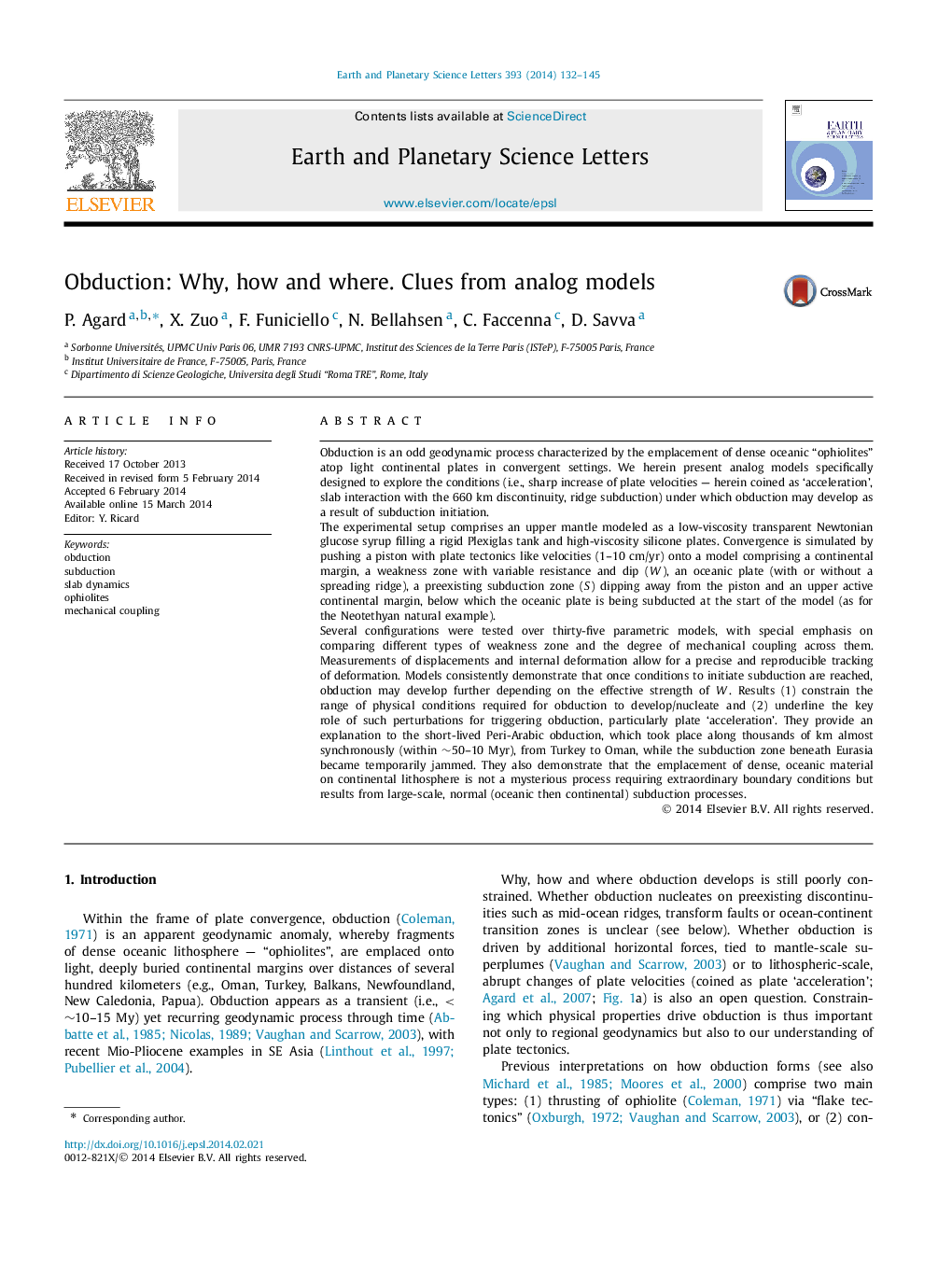| کد مقاله | کد نشریه | سال انتشار | مقاله انگلیسی | نسخه تمام متن |
|---|---|---|---|---|
| 6429328 | 1634763 | 2014 | 14 صفحه PDF | دانلود رایگان |
- Obduction is reproduced at relevant timescales (â¼10 Myr) and convergence rates.
- Obduction proceeds once adjacent subduction zones get mechanically locked.
- Extent of obduction depends on subduction force balance and resistance in weak zones.
Obduction is an odd geodynamic process characterized by the emplacement of dense oceanic “ophiolites” atop light continental plates in convergent settings. We herein present analog models specifically designed to explore the conditions (i.e., sharp increase of plate velocities - herein coined as 'acceleration', slab interaction with the 660 km discontinuity, ridge subduction) under which obduction may develop as a result of subduction initiation.The experimental setup comprises an upper mantle modeled as a low-viscosity transparent Newtonian glucose syrup filling a rigid Plexiglas tank and high-viscosity silicone plates. Convergence is simulated by pushing a piston with plate tectonics like velocities (1-10 cm/yr) onto a model comprising a continental margin, a weakness zone with variable resistance and dip (W), an oceanic plate (with or without a spreading ridge), a preexisting subduction zone (S) dipping away from the piston and an upper active continental margin, below which the oceanic plate is being subducted at the start of the model (as for the Neotethyan natural example).Several configurations were tested over thirty-five parametric models, with special emphasis on comparing different types of weakness zone and the degree of mechanical coupling across them. Measurements of displacements and internal deformation allow for a precise and reproducible tracking of deformation. Models consistently demonstrate that once conditions to initiate subduction are reached, obduction may develop further depending on the effective strength of W. Results (1) constrain the range of physical conditions required for obduction to develop/nucleate and (2) underline the key role of such perturbations for triggering obduction, particularly plate 'acceleration'. They provide an explanation to the short-lived Peri-Arabic obduction, which took place along thousands of km almost synchronously (within â¼50-10 Myr), from Turkey to Oman, while the subduction zone beneath Eurasia became temporarily jammed. They also demonstrate that the emplacement of dense, oceanic material on continental lithosphere is not a mysterious process requiring extraordinary boundary conditions but results from large-scale, normal (oceanic then continental) subduction processes.
Journal: Earth and Planetary Science Letters - Volume 393, 1 May 2014, Pages 132-145
